Nothing beats grilling burgers and searing steaks with your family in your spare time. But have you ever wondered if your propane grill requires a regulator? We researched this question and shared our findings in this post.
Your propane grill requires a regulator. A regulator helps to control gas flow from the propane tank to the grill, preventing dangerous situations.
Now that you know you need a regulator for your propane grill keep reading, as we will give you more information about regulators and why they're essential.
Why Does A Propane Grill Need A Regulator?
A propane grill regulator helps regulate gas flow from the propane tank to the grill. Without it, too much propane can flow into the grill and cause an explosion.
The regulator is typically found where the propane tank connects to the grill. It has a pressure gauge that measures how much gas flows through it. You can also adjust the valve on the regulator to control gas flow.
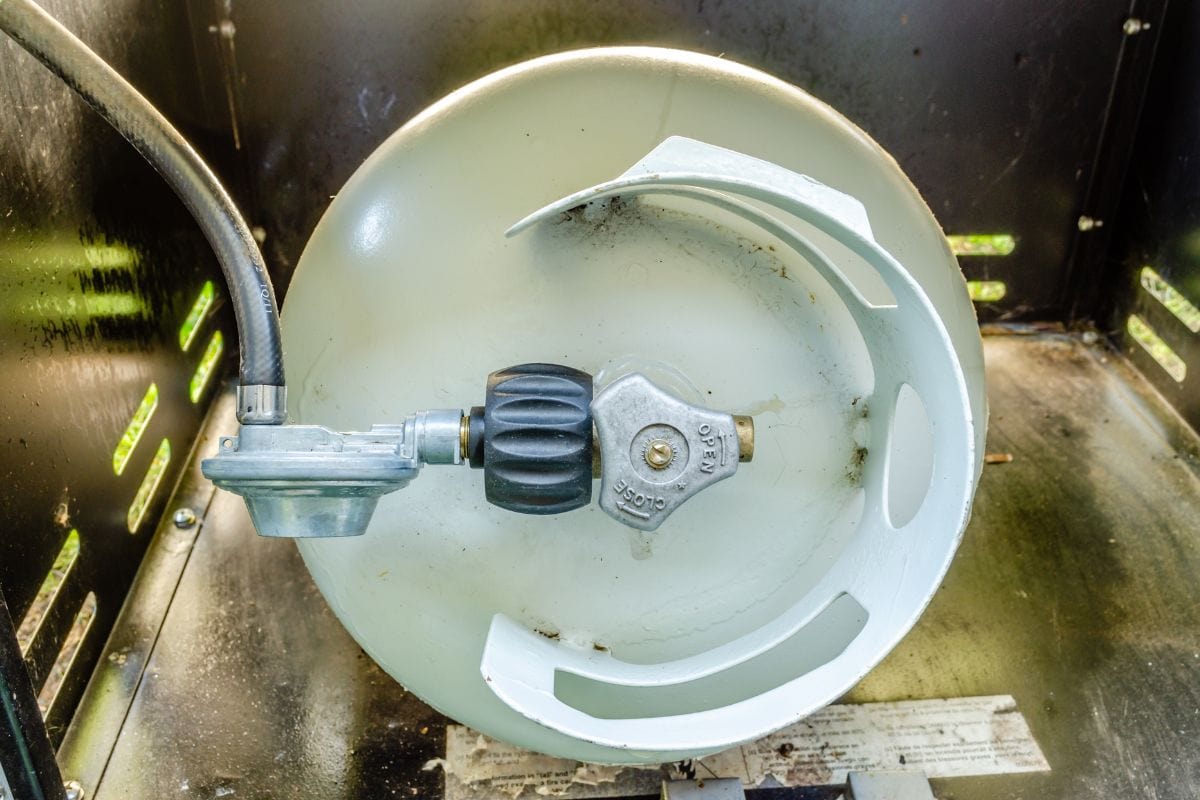
The regulator also ensures that the grill receives a consistent propane supply, regardless of the amount of propane in the tank. It does this by keeping a constant pressure inside the grill.
The regulator opens the valve to release some gas if the pressure inside the grill becomes too high. If the pressure falls below a certain threshold, the regulator closes the valve to prevent more gas from entering the grill.
In short, a regulator is a critical safety device that ensures the correct amount of gas is delivered to the grill, preventing potentially dangerous situations.
How Long Does A Propane Regulator Last?
A propane regulator typically lasts 10 to 15 years. However, the amount of gas used, the type of food cooked with it, and the quality of the regulator all influence its lifespan.
The regulator will last longer if you only use it when necessary. However, high-heat cooking and grilling in highly windy conditions contribute to premature wear.
Each propane regulator comes with a gauge indicating when to replace the regulator.
Click here to see this propane regulator on Amazon.
What Are The Signs Of A Faulty Propane Regulator?
If you suspect your propane regulator is malfunctioning, look for the following symptoms to assess whether it is time to replace it.
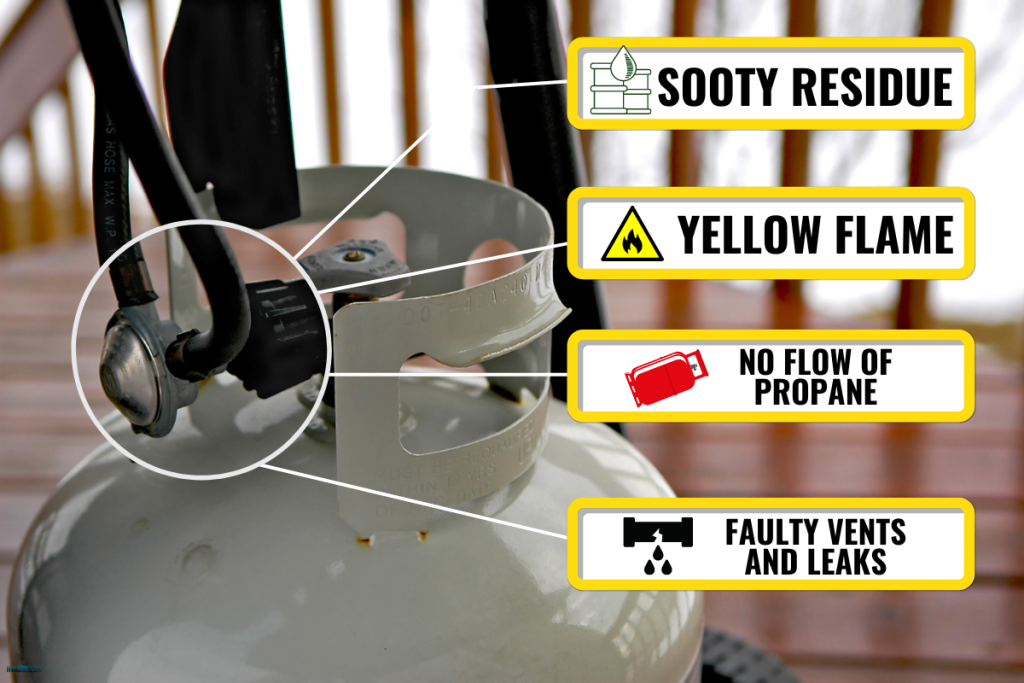
Sooty Residue
When propane burns, it produces a relatively clean flame and emits no dark smoke.
If you can see dark spots and blackened residue around your heater, grill, stove, or fireplace, something is wrong with your burner, thus restricting the fire from burning cleanly.
If adjusting the heat does not help, it may be time to replace your propane tank and pressure regulator.
Yellow Flame
Any propane-fueled appliance in good working condition should have solid blue flames that are level with the burner. If you turn on your stove or grill and see lazy yellow flames instead of blue flames, it's a sign that your regulator needs to be replaced.
The yellow flame may also indicate low pressure in the gas grill regulator. If, on the other hand, the flames are blue, noisy, and high, this suggests that the regulator is under high pressure.
No Flow Of Propane
Your burners will not light if no propane flows through the system. This problem can arise if the propane grill regulator pressure is shallow or a safety feature is built into the regulator.
When the regulator detects an excessive propane flow, it activates the safety valve and turns off the feature found on propane tanks. You can reset the propane regulator by turning off the propane tanks and ensuring all propane appliances are turned off.
Faulty Vents And Leaks
If you detect the odor of propane while using your appliances, it is a clear indication that the regulator is leaking. Spray or pour soapy dishwater over the regulator to confirm any leaks. If bubbles begin to form, you've found the source of the leak.
Vents at the bottom of the regulator allow it to breathe and keep it from overheating. The vents also serve as a safety feature, preventing excessive pressure from building up in the tank when it is overfilled.
If you check and discover that your tank is not overfilled, it may be time to change the regulator.
How Do You Replace Your Propane Regulator?
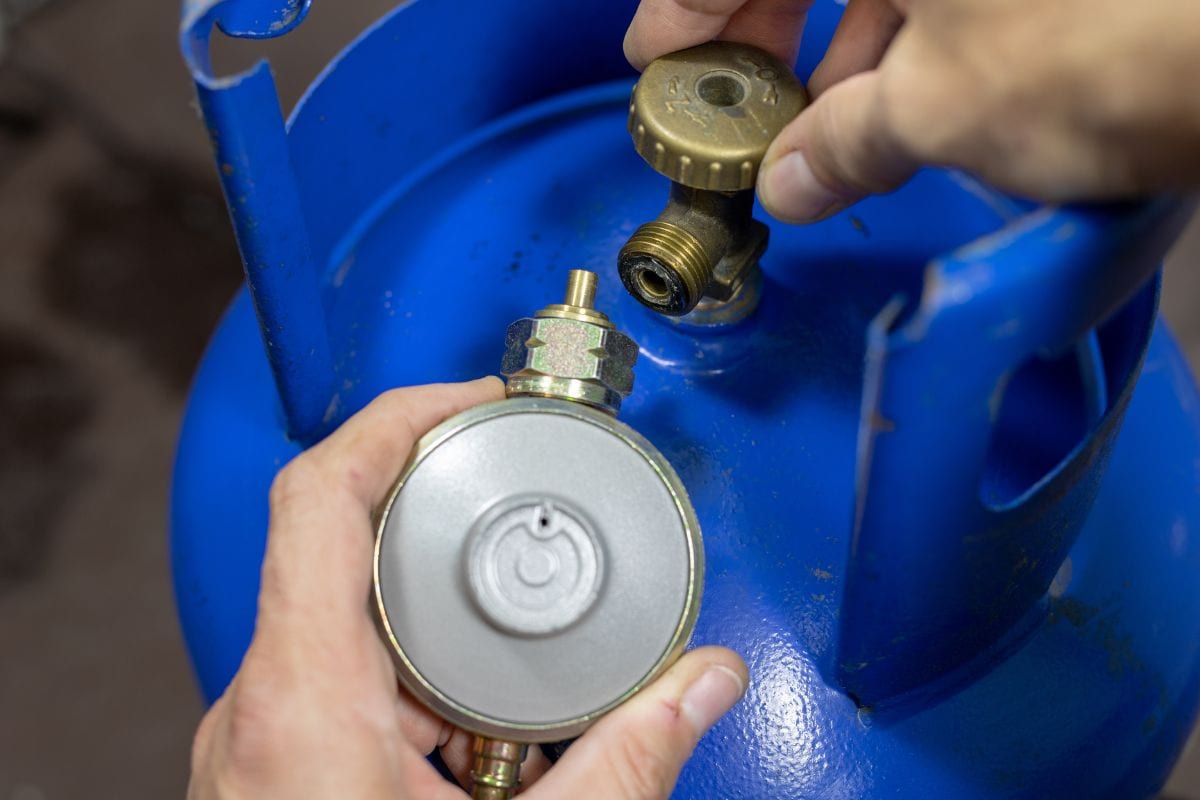
We have outlined the steps for replacing a faulty propane regulator below.
Step 1-Turn The Gas Supply Off
Turn off the propane tank's gas supply at the gas grill regulator. To turn off the gas, turn the knob counterclockwise. This is necessary to prevent propane from leaking during the replacement and ensure safety.
Step 2-Remove The Gas Grill Regulator
Remove the cotter pin from the main cooking frame, then remove the hose. After that, pull the regulator from the propane tank by pressing the ring beneath the regulator upwards.
Step 3-Replace The Propane Grill Regulator
Work backward to replace the regulator on the cooking frame and tank. Begin by lowering the primary regulator to the propane gas tank nozzle.
It is impossible to remove the regulator without pressing the ring. If this occurs, it indicates that the regulator is not attached correctly.
Step 4-Turn The Gas On And Check For Any Leaks
Turn the gas nozzle back on by turning it clockwise. Keep an ear out for any hissing sounds from the tank or the gas valve.
You can also detect leaks by smelling an unusual odor, such as gas escaping from the propane tank or checking for leaks with soap and water.
How To Test Your Propane Regulator For Leaks
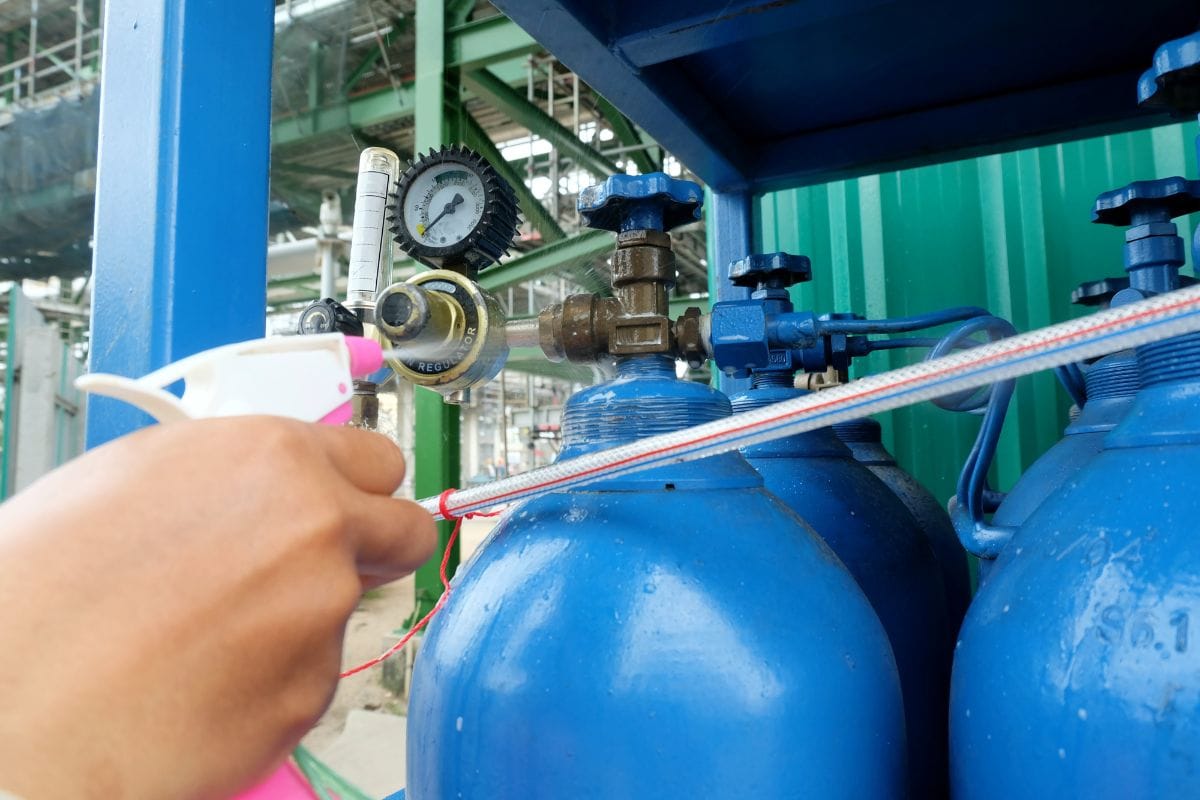
It is essential to properly diagnose the problem before trying to fix it. Here are a few of the most important tests you can perform on a propane regulator.
Water and Soap Leak Test
As previously stated, you can apply a dish soap and water mixture in a spray bottle to the regulator, particularly the connecting points.
Turn on the gas and the grills. If bubbles form, then you've detected the leak. This test will also inform you about the wear and tear on your regulator.
Flow-Pressure Test
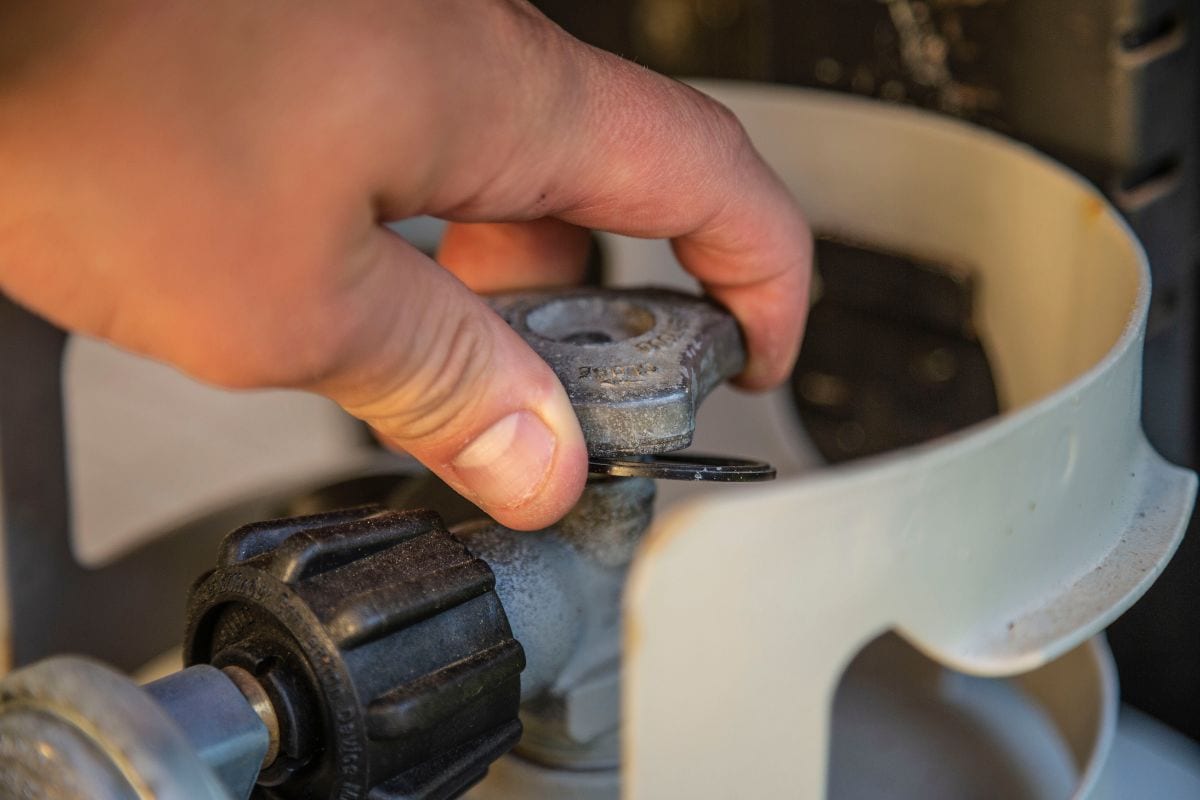
Install a water column manometer into the outlet test tap of the regulator. Set all of the burners on the appliance to their maximum settings. Once the devices are fully operational, check the pressure by reading your manometer.
Each tank brand and size has different pressure specifications. So, rely on the propane tank manufacturer to determine the proper amount of pressure. But note that a manometer should read at most 14 inches of water or less than 11 inches.
Do not try to adjust your regulator if the pressure-flow readings do not match those specified by the device's manufacturer. Low flow pressure indicates a propane system leak, but this test does not tell the leak's location.
If so, have a professional check out your propane system and locate the leak.
Install a more prominent regulator if there are no leaks but the propane system is under strain. You can determine if the system is under stress by checking whether the pressure indicated on the manometer is lower than required.
If the water does not move up to 11 inches, a more prominent regulator may be required, which may help appliances when they are operating at total capacity.
Click here to see this gas pressure test kit on Amazon.
Lock-Up Test
The procedure for reading the static gas pressure is as follows:
Turn off all propane appliances and the gas supply at the gas shutoff valve on each propane appliance.
To keep the pressure in the system stable, open the container valve. Observe whether the pressure readings on the manometer rise slightly and then fall.
The pressure should "lock up," which means it should rise, then stop and remain constant. The pressure is effectively held in place.
Monitor the pressure for a minute. Note how much the water rises on the manometer if it rises beyond the initial point during lock-up. If your normal pressure was 11 inches within the water column, your lock-up pressure should be no higher than 14 inches.
Replace the regulator if the lock-up pressure rises by more than 30% or if the force fails to lock up during the test.
It's A Wrap!
Regulators are essential to your propane grill or any propane-fueled system, so take notice of their significance. A functional regulator will allow you to use your appliances safely and correctly.
To avoid explosions caused by gas leaks, you should be mindful of the symptoms of a faulty propane regulator.
If you found this post helpful, check these related articles:


